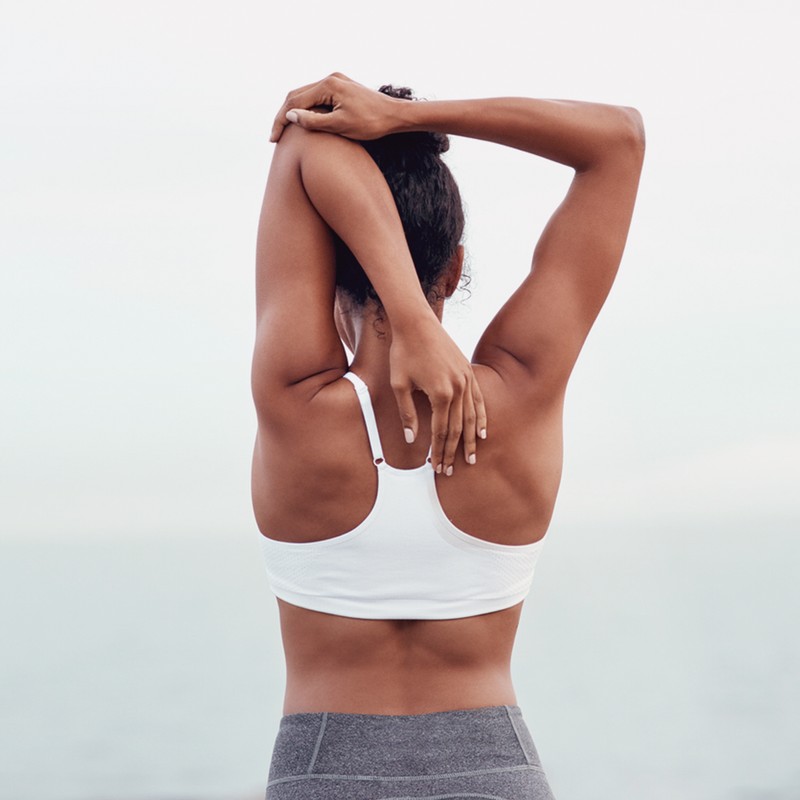Should You Always Warm-Up Before Exercise?
Is warming up before a workout always necessary?
As Rory Knight, co-founder of Track Life LDN and trainer at KXU says, “Preparation is key. I deem warm-ups so necessary that I’d never train without warming up thoroughly. The aim of a warm-up is to prepare the body both physically and mentally for the activity you are about to perform. The aim should be to mobilise, activate, energise and stimulate both the mind and the body. A good warm-up should leave you feeling confident, fired up and ready for action.” Science agrees, with studies showing a warm-up will boost blood flow to the muscles and increase body temperature and heart rate. As the body warms up, oxygen is sent to the muscles, effectively priming them for action. Warming up will also help your muscles contract and relax faster, and studies have suggested a link between warming up and improvements in muscle strength and power.
So does warming up always guarantee a better workout?
Taking the time to activate the body prior to hitting the gym, or the pavement, is a sure-fire route to a better workout, especially when it comes to staying strong and injury-free. “A warm-up will improve your performance, and allow you to better tune into your body,” says Alex Rogers, trainer at KXU. “A warm-up that incorporates mobility drills will allow you to become more aware of how your body is performing that day and areas where you may feel tight. If you are more aware of areas of potential weakness, such as tight muscles, you can then prevent injury or over-straining by avoiding particular positions.” Gideon Remfry, wellness director at KX and KXU agrees, adding a warm-up can also offer an opportunity to boost your overall athletic skill development. “If you can commit ten to 15 minutes prior to each exercise session to warming up, and let’s say you work out three times per week, that gives you 45 minutes of skill exercise development per week, or three hours per month. That’s a serious amount of time to master movements,” Gideon says.
Are the benefits all physical?
Not necessarily, says Jason Reynolds, head of fitness at Lanserhof at The Arts Club. “A recent study by the American College of Sports Medicine suggests warm-ups may not actually be helpful for increasing sporting performance from a physiological point of view. The study suggests warm-ups and preparation – namely stretching and light intensity cardio – has a psychological effect that pushes the limits of performance.” Jason also says a warm-up can help to reduce performance anxiety, making them particularly important if you’re feeling nervous about heading back to the gym post-lockdown.
Do certain workouts require a warm-up more than others?
The pros agree the more intense the workout, the more time you should dedicate to priming the body. Take running, for example, a high-impact activity that incorporates dozens of muscles and various joints. As Alex explains, “Running involves a triple extension, which means the hip, knee and ankle need to all bend simultaneously with sufficient mobility. For example, dorsiflexion is the mobility in the Achilles tendon (back of the ankle) and plantar flexion is the flexion down the front of the foot – these factors play a key role in running, so taking the time to work on the mobility of the foot will greatly improve your workout.”
Are there certain times of the day when warming up is more important?
Yes – if you exercise first thing in the morning, a warm-up is even more important, says Jason. “Natural body movements will provide a small percentage of preparation for movement, so a full day of activity will increase your heart rate and joint ROM (range of motion) compared to just rolling out of bed and exercising,” he adds.
Where are we going wrong with the warm-up?
One thing to note is that stretching and warming up aren’t interchangeable – something the pros say many of us get confused with. Don’t assume static stretching has you covered – studies actually show static stretching can decrease your performance. Instead, you should be aiming for a dynamic, functional warm-up.
What does a good warm-up look like?
According to Gideon, it’s best to address three main factors in your warm-up. “The first of these is raising the heart rate, ideally done using a range of relevant activities which build in intensity to increase body temperature and muscle elasticity. Secondly, you should activate and mobilise the muscles, building the ranges of mobility and ideally focusing on activating the specific muscle groups and movement planes required for your workout. Finally, you should focus on building intensity around specific movements you will use in your workout.” As for how long your warm-up should be, the experts say there’s no set length of time. Factors like time of day, the temperature of your environment, your activity level, and any soreness you may already be feeling can all determine how long you’ll need to warm up, but anywhere from five to 20 minutes is a good bet.
What are some hero warm-up moves?
Moves that focus on opening the hip flexors, thoracic spine and hamstrings are a good place to start, according to Jason, who says our sedentary lifestyle is taking its toll on these areas of the body. “I spend a lot of time working to help people reduce tightness and irritation in the hip flexors, (largely due to weak glutes and hamstrings) as well as addressing tight shoulders and a weak upper back. I am also a strong advocate of teaching people how to engage the core to protect the lower back.”
When it comes to specific moves, Omar Mansour, co-founder of Track Life LDN and trainer at KXU, says there are three main moves everyone should be incorporating into their warm-up. Omar says he is a huge fan of ‘the world’s greatest stretch’, which opens up your hips and stretches your psoas, a major muscle that starts in your quad, which can cause back tightness. Simply start in a plank position, then lunge forward with your right leg, placing your foot just outside your right hand. Rotate your torso to the right as you reach your arm straight overhead; hold the lunge/reach for about 20 seconds and then reverse the movement back to the start and repeat on the other side. Omar also recommends plank walk-outs and reverse lunges with a reach. Moves that engage the back and core – like cat cows and spinal extensions – are also worth a try, as are side lunges and inchworms.
The bottom line?
Whether you’re heading out for a run or doing a HIIT workout at home, the experts agree warming up is just as important as the workout itself. Just be sure to save static stretching for your cool down, instead opting for stretches that move your body and get blood pumping for what’s ahead.
KX, KXU and the gym at Lanserhof at The Arts Club have now re-opened. Visit KXLife.co.uk, KXU.co.uk and TheArtsClub.co.uk/Lanserhof for more information.
*Features published by SheerLuxe are not intended to treat, diagnose, cure or prevent any disease. Always seek the advice of your GP or another qualified healthcare provider for any questions you have regarding a medical condition, and before undertaking any diet, exercise or other health-related programme.
DISCLAIMER: We endeavour to always credit the correct original source of every image we use. If you think a credit may be incorrect, please contact us at info@sheerluxe.com.






